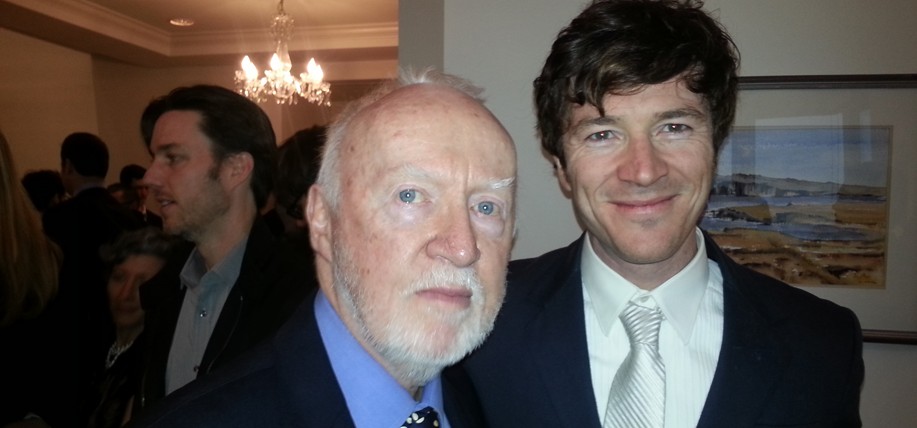In August 1933, James Gralton became the only Irish citizen to have been deported from Ireland. Despite having no evidence to substantiate their charge that he was a subversive communist, de Valera’s government, in collusion with the Catholic Church and complacent county politicians, forcibly removed Gralton from his country without trial. He never returned and died 12 years later in New York, at the age of 59.
Known in his local Leitrim as Jimmy, he left school at 14, moved to Britain, and joined the British Army. He deserted in protest of having to serve in India, objecting to the British troops in Ireland, and moved to New York in 1909. There, he formed the beginnings of his more radical politics, working with labor unions, decrying the conditions of workers, and founding the James Connelly Club, a socialist club based on Connelly’s writings.
He returned to Ireland in 1921, before the Anglo-Irish Treaty was signed, and became involved in land agitation. He formed the radical Direct Action Committee, which organized much of his efforts to regain land for tenant farmers from which they had been evicted, and ran it out of a hall he built on his father’s land.
In that hall also, he organized community activities like art classes, dances, history lessons, and Irish language courses. But these populist activities were at odds with the Fine Gael government and the Church, and the Free State forces led him to flee the country by mid-1922. He returned in 1931, after de Valera and Fianna Fáil took control, thinking they would be more sympathetic to the progressive politics he had learned in America, and he rebuilt the hall. He was wrong. And because of this, he has been almost entirely written out of all but local Leitrim history.
On a Wednesday evening this past April, a few days after what would have been Gralton’s 129th birthday, Barry Ward, who plays Gralton in the new film Jimmy’s Hall, walked into a penthouse living room near the U.N. headquarters in New York, and just 11 blocks north of Bellevue Hospital where Gralton died. He was there for the Irish Film Board reception of the movie’s North American premiere at the Tribeca Film Festival later that night.
It was raining outside and the room was nearly at capacity – the door to the patio was closed. Ward was dressed in a white shirt and tie, a navy blazer, black jeans, and off-black leather oxfords with blue laces to match, a far cry from how he was last seen in the film, being carted away to deportation after six months on the run. But if he had any inclination to make like his character and bolt out the second floor to avoid being cornered by police – or industry people – he didn’t show it.
The film is directed by Ken Loach, and serves as a companion sequel to his 2006 Palm d’Or-winning The Wind that Shakes the Barley, and by thematic extension Michael Collins, completing a trilogy of the troubled conservatism that bedeviled the Irish republic. Set between 1931 and 1933, the movie follows Gralton’s return to Leitrim from the U.S., the resurrection of the hall, and the efforts of the Church and the local IRA to shut it down. The climax takes the form not of an action/adventure chase, or even an ideological stand-off, but of a tenderly subversive slow dance shared between Gralton and Oonagh (played by Simone Kirby), his lost love who married another.
At the reception though, there was no such radicalism, and Ward soon settled into a routine of congratulations, small talk, and catching up.
“We just bought a house, finally,” Ward told one man, referring to the place in London where he and his girlfriend of 15 years, Laura, live with their one-year-old son, Tom. Kevin Ryan, an actor of Copper fame, asked him how he liked it.
“I’m hardly ever there,” he said. “But it’s a great place.”
Ward asked about the Boston Marathon medal Ryan was wearing, unavoidably nestled, ascot-like, in the space on his chest left open by his low-buttoned shirt.
“It was pissing rain the whole time. But that’s why training in Ireland’s good for you.” (He told The Boston Globe after the race that he “would come back in a heartbeat. It reminds me of Dublin.”)
“What was your time?”
“4:16,” he said, adding that it was the fastest celebrity time.
These were old friends coming together, as were most of the guests. But even in a room of recognizable faces, there were the unfamiliar.
Elsewhere, one woman approached a twenty-something man, dressed in a plaid shirt, tie, and jacket.
“I think we’ve met before. You look familiar.”
“It’s possible? I don’t think so though.”
“Oh, are you famous?” She appeared only half joking.
He was not, it turned out.
One wonders how recognizable Jimmy Gralton would have been here, and how he would have felt on this 52nd floor. He was 44 in 1931, and balding. Ward is pictured above. ♦


Leave a Reply